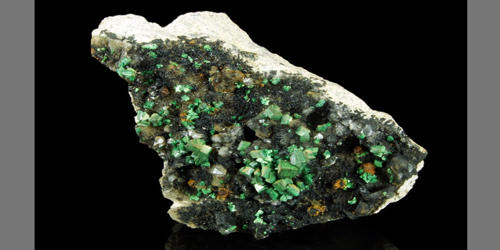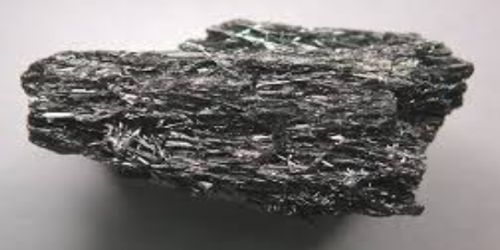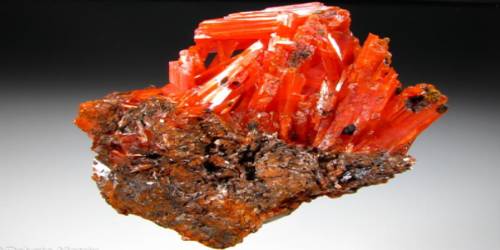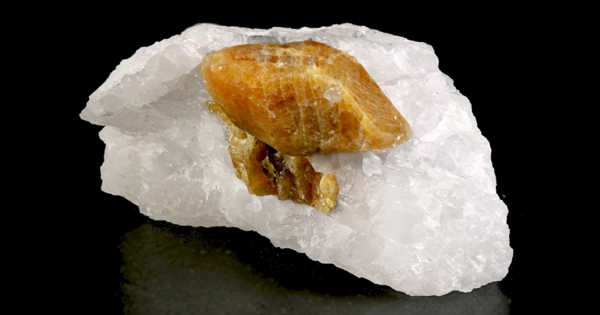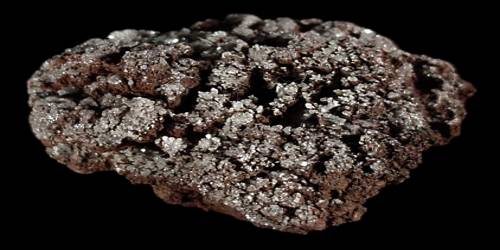Metatorbernite is a mineral Cu(UO2)2(PO4)2.8H2O consisting of a hydrous phosphate of copper and uranium containing less water than torbernite. It is a radioactive phosphate mineral and is a dehydration pseudomorph of torbernite. is a dehydration product of its close cousin, torbernite, hence the name. Chemically, it is a copper uranyl phosphate and usually occurs in the form of green platy deposits. This is a radioactive mineral and should be stored away from other minerals that are affected by radioactivity and human exposure should always be limited.
As with torbernite, it is named after the Swedish chemist Tornbern Bergmann. The structure of meta-torbernite is composed of phosphate tetrahedrons linked to uranium-oxygen groups that form distorted octahedrons. This structure produces the tabular habit, the one perfect direction of cleavage, and the relative softness. It is especially closely associated with torbernite but is also found alongside autunite, meta-autunite, and uraninite.
General Information
- Category: Phosphate minerals
- Formula: (repeating unit) Cu(UO2)2(PO4)2·8(H2O)
- Crystal system: Tetragonal
- Crystal class: Dipyramidal (4/m) (same H-M symbol)
- Colour: Light to dark green.

Fig: Metatorbernite – consisting of a hydrous phosphate of copper and uranium
Properties
It can form by direct deposition from a supersaturated solution, which produces true crystalline metatorbernite, with a dark green color, translucent diaphaneity, and vitreous luster. However, more commonly, it is formed by the dehydration of torbernite, which causes internal stress and breakage within the crystal lattice, resulting in crystals composed of microscopic powder held together using electrostatic force, and having a lighter green color, opaque diaphaneity, and a relatively dull luster.
- Crystal: habit Flat plates
- Cleavage: Perfect
- Fracture: Brittle
- Mohs scale hardness: 2.5
- Lustre: Vitreous, adamantine
- Streak: Light green
- Specific gravity: 3.7-3.8
- Refractive index: 1.624-1.626
- Density: 3.52 – 3.70 g/cm3 (Measured) 3.71(5) g/cm3 (Calculated)
Occurrence: Typically a secondary mineral, a dehydration product of torbernite formed during weathering; formed directly above 75 ◦C.
Association: Torbernite, meta-autunite.
